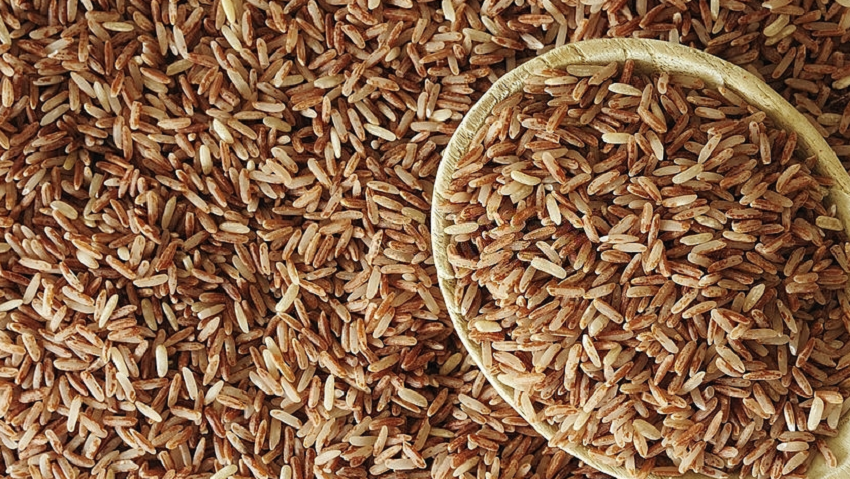
26 Jul Is Brown Rice Pasta High Glycemic?
When it comes to choosing healthy and nutritious food options, one topic that often comes up is glycemic index and how it impacts our overall health. In recent years, brown rice pasta has gained popularity as a healthier alternative to traditional pasta made from refined wheat flour. But the question remains: Is brown rice pasta high glycemic? In this article, we will delve into the world of glycemic index, explore the benefits of brown rice pasta, and determine whether it is a suitable choice for those mindful of their blood sugar levels. This article is provided by smartpastamaker.com
Understanding Glycemic Index
What is Glycemic Index (GI)?
Glycemic Index (GI) is a numerical ranking system used to measure how quickly a carbohydrate-containing food raises blood glucose levels compared to pure glucose. Pure glucose has a GI of 100 and serves as the reference point for all other foods. Foods with a high GI are rapidly digested and cause a rapid spike in blood sugar levels, while low-GI foods are digested more slowly, resulting in a gradual and steady increase in blood glucose.
The Impact of High Glycemic Foods
Consuming foods with a high glycemic index can lead to a rapid rise in blood sugar levels, followed by a crash, leaving you feeling fatigued and hungry shortly after eating. Long-term consumption of high-GI foods has been associated with an increased risk of type 2 diabetes, obesity, and heart disease. Is brown rice pasta healthy? Explore now.
Is Brown Rice Pasta High Glycemic?
The Truth about Brown Rice Pasta
Brown rice pasta is made from whole grain brown rice, which undergoes minimal processing compared to traditional wheat pasta. As a result, it retains its natural fiber content and essential nutrients, making it a more wholesome option. The presence of fiber can influence the rate of carbohydrate absorption, potentially impacting the glycemic response.
The Glycemic Index of Brown Rice Pasta
While brown rice pasta is a whole grain product, its glycemic index is not as low as some other whole grains. The exact GI value may vary depending on the brand and cooking method, but generally, it falls within the medium range of the glycemic index chart. This means that brown rice pasta may cause a moderate increase in blood sugar levels compared to low-GI foods.
The Role of Fiber in Brown Rice Pasta
The fiber content in brown rice pasta may help slow down the digestion and absorption of carbohydrates, which can attenuate the glycemic response. Fiber acts as a physical barrier, preventing the rapid breakdown of starches into simple sugars, thus promoting more stable blood sugar levels.
Factors Affecting Glycemic Response
It’s important to note that individual responses to different foods can vary based on factors such as genetics, gut microbiota, and overall diet. Some people may experience a more significant increase in blood sugar levels after consuming brown rice pasta, while others may find it to be a suitable option that doesn’t cause sharp spikes in glucose.
Benefits of Brown Rice Pasta
Rich in Nutrients
Brown rice pasta retains its natural nutrients due to minimal processing. It is a good source of vitamins, minerals, and antioxidants that are essential for overall health.
Gluten-Free Option
For individuals with gluten sensitivity or celiac disease, brown rice pasta offers a delicious and safe alternative to traditional wheat pasta.
Satisfying and Filling
The fiber content in brown rice pasta can promote a feeling of fullness, helping to control appetite and support weight management.
Easily Digestible
Brown rice pasta is gentle on the digestive system, making it suitable for people with sensitive stomachs.
In conclusion, while brown rice pasta is not classified as a low-glycemic food, it still offers numerous health benefits over traditional wheat pasta. Its rich nutrient profile, gluten-free nature, and gentle impact on the digestive system make it a valuable addition to a balanced diet. However, individuals with diabetes or those closely monitoring their blood sugar levels should consume it in moderation and be mindful of portion sizes. As with any food choice, it’s essential to consider the overall diet and lifestyle when making decisions about what to include in your meals.
FAQs
- Can I replace wheat pasta with brown rice pasta if I have diabetes?
While brown rice pasta is a healthier option than traditional wheat pasta, individuals with diabetes should consume it in moderation and monitor their blood sugar levels accordingly.
- Is brown rice pasta suitable for a gluten-free diet?
Yes, brown rice pasta is naturally gluten-free and can be enjoyed by individuals with gluten sensitivity or celiac disease.
- Does brown rice pasta taste different from wheat pasta?
Brown rice pasta has a slightly nutty flavor compared to wheat pasta, but it pairs well with various sauces and ingredients.
- Is brown rice pasta a good source of fiber?
Yes, brown rice pasta is a good source of dietary fiber, which promotes digestive health and helps control blood sugar levels.
- How can I incorporate brown rice pasta into my diet?
You can use brown rice pasta in place of traditional pasta in your favorite recipes, such as spaghetti, macaroni and cheese, or pasta salads, to enjoy its health benefits and unique flavor.


Sorry, the comment form is closed at this time.